Laminate is a strong and stable coating, but over time the surface can ...
|
|
Among various flooring, a special place is occupied by parquet. This is floor ... |
Since ancient times, the tree has been considered popular building material thanks to its ... |
Thermal insulation of the house. Ecowry insulation
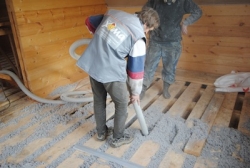
Among the familiar insulations, so far quite convenient in operation and profitable thermal insulation material as ecowata are rarely used. Ten years ago, the majority of the inhabitants of our country did not know about such insulation. First, we will decide what this material is, and how to use it yourself for thermal insulation at home with your own hands.
Content:
- Characteristics and composition of ecovata
- Advantages and disadvantages of ecovable
- Manual laying is ecowan
- Mechanized styling is ecowan
- Equipment installation equipment
Characteristics and composition of ecovata
Ecowata (juniol, thermoflock) is a cellulose heater of a milk or grayish shade, which consists of cellulose fibers - a processed newspaper waste paper (81%). It copes with the heat -insulation function and is suitable for creating a homogeneous seamless layer. But cellulose itself cannot be used in construction, as it is easily ignited and destroyed under the influence of biological factors.
The composition of the ecovata also contains two auxiliary components to eliminate such shortcomings: boric acid (12%) and drill (7%). The drill acts as an excellent antipyrene, as it perfectly reduces the fire hazard of the material. Of course, this heat insulator cannot be used for insulation of heating and chimneys boilers, but for roofs, walls and inter -story floors it is ideal.
Antiseptic boric acid cellulose gives complete protection against rodents, rot and fungi. Oddly enough, such a combination guarantees a much better protection against rodents than that of polystyrene or mineral wool foam, which are very attractive to them. This thermal insulation material also uses lignin, binding the particles of ecowan when moisturizing with the insulated design.
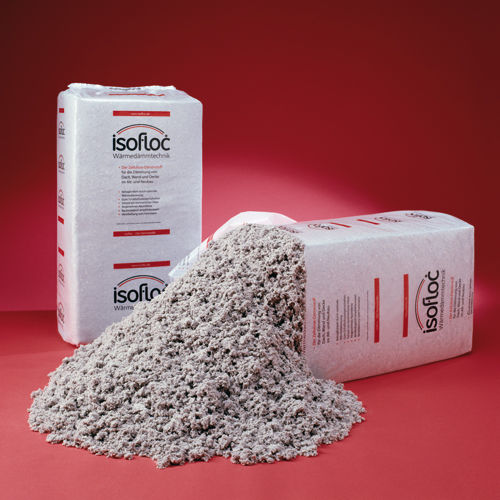
Regarding the form of release, the ecowan is worth saying that this insulation is an unformed mass of cellulose fibers and is actually a loose material. For the convenience of transportation and storage, the heat insulator is slightly compressed and packaged in peculiar briquettes, which have a density of up to 110 kg/m3. Before use, ecowatus is unpacked and scared. Moreover, it in volume increases by approximately 3-4 times.
Attention should be paid to such characteristics of the ecovite:
- Thermal conductivity coefficient from 0.037 to 0.042 W/MK;
- Group of combustibility - G2 (moderately combustible);
- Density during installation - 26-95 kg/m;
- Vapor permeability is close to 0.3 mg/(MCPA);
- Group of smoke formation - D2 (moderately smoke -forming);
- Distribution on the surface of the flame 0;
- Density - 40 kg/m.
Advantages and disadvantages of ecovable
We denote in more detail a number of obvious advantages of ecovy, allowing it to be indispensable in thermal insulation of houses and their structures:
- High thermal insulating properties: Ecowata insulation is able to hold up to 20% of the humidity in the upper layer, which practically does not affect its properties, unlike mineral wool, which, with an increase in humidity, adds 8-9% by only 1% in thermal conductivity.
- The air permeability is much lower than that of mineral, and at the same time it is elastic and well amortizes all sound waves, in contrast to the polystyrene foam insulation. All this allows Ecowatus much better to protect the interior of the sounds and noise from the outside.
- At the expense of its structure, Ecowuta easily dries if water suddenly fell on it, without losing after drying its properties. When using this insulation in a frame wooden house, it contributes to the natural maintenance of the level of air humidity within the comfortable limits for human life.
- Ecowata does not contain toxic substances that carry a danger to human health and life in the installation process, as well as phenolic binders. Only natural lignin is used, and boric acid and drill do not fly apart and do not evaporate, so they are completely safe. There is also no evaporation during operation.
- This insulation is a loose homogeneous mass, so after laying inside the ceilings or in the prepared cells of the frame, a seamless layer is obtained, which completely fills the entire volume, which is allotted to the insulation, without creating the bridges of the cold or void that worsen thermal insulation.
- Ecowata, despite its origin, does not burn in the fire, but only smolders, not allowing it to ignite it, does not be rotten and mold, it does not have a smell, and it is a chemically passive medium that does not cause metals corrosion, which is in contact with her.
- The use of traditional thermal insulation materials inevitably leads to a significant amount of waste of material, and when using ecowan, you can use waste a second time.
In addition to the advantages of Ecowan, like any building material, there are shortcomings:
- It is not enough just to buy an ecovata, but you also need to prepare special equipment for the installation of insulation. This minus significantly affects the total cost of thermal insulation of ecowide.
- If you have chosen the dry method of laying this material, then you will encounter while working with a lot of dust.
- Due to the feud of material, some inconvenience may occur when warming the walls of the house, so it is recommended to make a vertical backfill.
- It is necessary to constantly monitor the styling of the ecovy, since with improper fastening it can settle.
- Ecowata is not recommended for use when warming the ceilings over the basement, in which the humidity level is stably high.
Manual laying is ecowan
You can warm the house with ecovata in different ways. Industrial options are spraying a slightly moisturized ecowan to the insulated surface using special equipment, and laying dry material in a frame, pumped out using powerful compressors. You can also insulate the house with ecowide manually, but it will take a little more time, and at the same time the cost of the material will increase.

The manual method of laying ecowan is associated with large time costs, laboriousness and inability to fill in in some cases all the cracks and voids. However, developers give preference to this particular methodology, since the cheapness of the procedure is on the face. If you insulate a household extension, garage or cabinet, use our instructions:
- Expand the bale with the insulation, pour its contents into any capacity of the barrel, a large construction bucket, a box of equipment.
- Since the ecowata is compressed for the convenience of transportation and reducing volume, it must be slightly fluffed. This will be done with a nozzle for paint and drill. After that, the heat insulator is completely ready for use.
- The manual method of insulation of an ecowide house is suitable only for the procedure of dry laying in the walls and backfilling in the floor when laying from the upper floor.
- The material when filling in the ceiling should be evenly distributed between the rafters or lags, all the necessary places are filled with the embankment, the surface is aligned with a small slide so that the ecovata is slightly compacted when laying the floorboard.
- When carrying out dry filling of the material in vertical structures, it must be slightly tamped so that the density becomes 2-2.5 times smaller than in factory packaging.
Mechanized styling is ecowan
Mechanized laying of ecovatata is considered the best solution during thermal insulation work. If you compare with the manual method, then the mechanized method has a number of advantages:
- the speed of installation with a mechanized method is ten times higher than manual;
- economical expense of ecowan;
- the minimization of technical errors that are possible in view of the human factor.
The laying of ecovites using blowing equipment is divided into three types: wet, dry and wet-cell. It is useful for you to find out about each of them.
Dry way
It is recommended that the ecowan is echoped to be carried out for insulation of the inclined and horizontal surface, in order to fill the closed cavities that are available in the walls, insulation of inter -story ceilings and installation in non -devastated structures. The essence of this method of installation of ecowyus lies as follows:
- In a closed cavity (cavity can be limited not only by rigid structures, but also by lining material, craft paper and membrane waterproofing) make a hole. It is advisable to make a hole at the top of the structure.
- A sleeve must be inserted into this hole, according to which a mixture of the heat insulator and air arrives under a certain pressure.
- When passing through the slots, the air will tightly tighten the smallest particles of ecowan, having a villous structure and clinging to each other and for any irregularity.
- As a result, a traffic jam is formed from Ecowan, which firmly plugs all available cracks.
- The cavity is filled with insulation with the desired density, and the hole is closed in any available way.
- In a similar dry way, ecowuta is sprayed on horizontal surfaces, but you can not be isolated these surfaces.
- For the horizontal distribution of ecowar, the filling density of 45 kg/m is selected, for a vertical order of 65 kg/m.
Wet method
The wet method of spraying is designed for thermal insulation of the walls of the house and open vertical structures. Moisturized ecowata can easily stick to the walls of any material and at the same time form a continuous layer of insulation, the density of which is within 50-65 kg/m. High adhesion of the material is determined by the presence in the cellulose of lignin, which is known as a very adhesive substance and is part of almost all plants.
The variant of wet ecowan is perfect for thermal insulation of brick block buildings and is performed in accordance with the following instructions:
- First you should make a crate of walls using a wooden beam or metal profile.
- Ecowata, which is moistened with water, is sprayed between the frame structures into the open wall space using special equipment.
- At the output of the nozzle of such equipment, fluffed wool will be wetted with a small amount of water, supplied under pressure to the surface.
- After drying, the material becomes plastic and elastic and settles tightly with any structures, even electrical wiring and other communications, forming a continuous cover layer that is not subjected to deformation.
- All the excess material is cut in level and dried, after which this material is again ready for reuse. Thus, when laying ecowan, there is no waste remains at all, because it can be used a second time.
Wet-cell method
The humid-cell technique of ecovatia is different from wet only in that adhesive substances are additionally added to the water to moisturize that enhance the adhesion of ecowan. The use of this method is determined by very low deformation when drying, the absence of harmful compounds and elasticity in the composition of harmful compounds.

This method is used for insulation from below horizontal surfaces and ceilings, to which there is no access, and for applying ecowan on complex surfaces, thin -walled and hanging structures. In addition, with this method you can apply to Ecowata on all sorts of vertical surfaces, but this is not justified economically. The technique of thermal insulation and insulation of the house in this case does not differ from the humid technique.
Equipment installation equipment
For a mechanized way of laying ecowan, as we said above, special equipment is required. A huge number of blowing devices are presented on the market. But you can also make such equipment yourself. All devices, both factory and homemade, work according to the general principle and have a similar configuration:
- Bunker receiver for laying ecowan. In homemade devices, various barrels, household plastic containers and cases from Soviet -style washing machines are successfully used.
- Tor -nourish. This unit is intended for fluffing the insulation from a pressed state. In the manufacture of equipment with your own hands, you use an ordinary drill with nozzles to knead water -based paints and dry mixtures.
- Pump. It is needed for effective and quick injection of ecovy. Different models of vacuum cleaners are used in homemade devices.
- Flexible corrugated pipes that have a diameter of 50-100 millimeters. These pipes are needed as a weekend and input channels when warming the walls of ecowide.
- A set of pump, nozzles and hose for wet styling.
The manufacture of fictional equipment will cost you about 18000-32,000 rubles. Factory manufacturing devices, depending on performance and capacity, cost from 180,000 to 600,000 rubles. Of course, the productivity of factory equipment is much higher than homemade, but for one -time work it is more advisable to make a simple device with your own hands.
Thus, choosing a heater for thermal insulation of the house, you should pay attention to Ecowata. A magnificent combination of operational and technical properties, environmental cleanliness, fire safety, high biological resistance, the absence of material in the thickness of the material during the operation of rodents and insects, the non -waste installation are convincing arguments in favor of choosing this material. In addition, work on insulation of the house using ecowan will cost cheaper than laying any other thermal insulation materials.

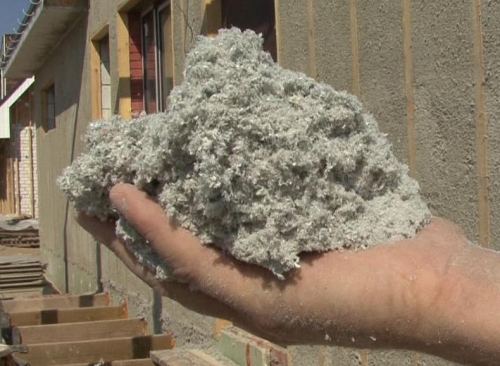
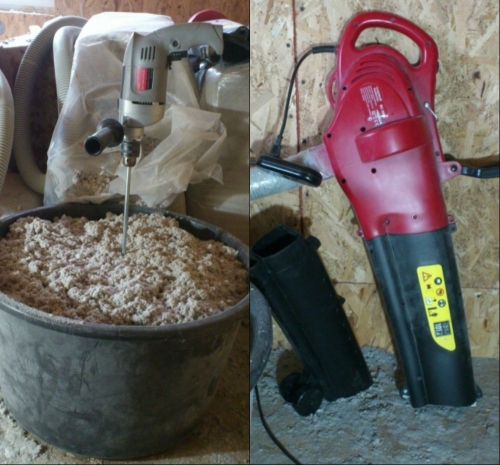
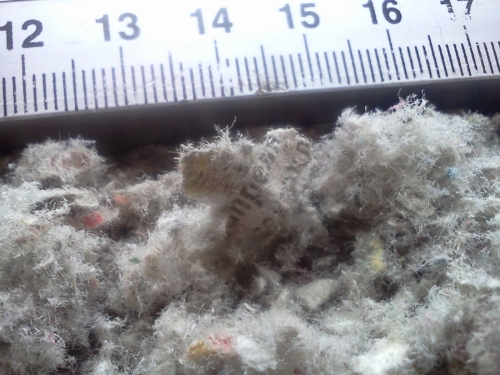
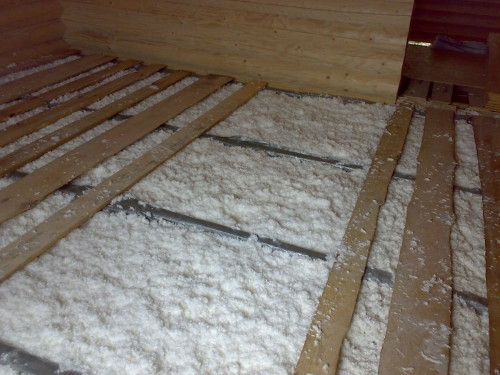
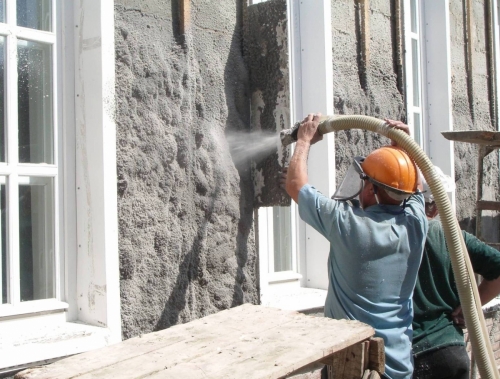
I would still spray
I would still spray polyurethane foam !!!!
Ecowata is very good
Ecowata is a very good insulation. I recommend.